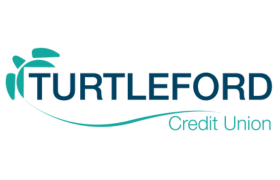At Turtleford Credit Union, we’re owned by our members—not outside shareholders. That means when we have a strong year, we return a portion of our profits to the people who helped make it happen.
We did well in 2024 (thanks for your support!), and that means $150,000 is going back to our members through our Patronage Allocation.
What is Patronage?
Patronage is our way of saying thank you.
Each year, our Board of Directors reviews our financial performance. When our income exceeds a set threshold, we return a portion of earnings to members based on how much they saved or borrowed with us.
- Ownership
- Community
- Trust
How it Works
Who’s eligible?
If you saved or borrowed with us last year, you're likely eligible to receive a share.
Where will I see it?
You’ll find your Patronage Allocation on your June 2025 statement.
Where does the money go?
It’s deposited directly into your account:
- If you have a chequing account, it goes there.
- If not, it goes into your savings account.
- If you don’t have either, it’s applied to the loan that generated your return.
We’re proud to share our success with the people who make it possible—you.
Do you have questions? Here are some answers.
Why does Turtleford Credit Union return profits to members instead of shareholders?
Because we don’t have shareholders. We have members—and returning profits to members is part of what makes a credit union different.
How do I know how much I received?
Your individual Patronage Allocation amount is listed in your June statement. If you need help finding it, we’re happy to walk you through it.
Is this guaranteed every year?
No—it depends on our financial results. If our earnings exceed the required threshold and the Board approves a payout, Patronage is distributed.
Is the amount taxable?
Yes, it is taxable, and in some cases you may receive a T5 slip if your Patronage Allocation qualifies as taxable income under CRA guidelines.
Can I request my allocation in a different form?
No. This year’s allocation is paid automatically to eligible members through their existing account(s).
What if I didn’t receive anything?
There are a few reasons this could happen:
- Your account was closed before year-end
- Your loan was in arrears over 90 days
- Your allocation amount was under $5
- You held a type of account that is not eligible (e.g., registered accounts, trust or institutional accounts)
Who decides how much gets paid out?
The Board of Directors makes this decision each year based on our financial results and whether we’ve exceeded the threshold set for distributions.
Stop by the branch, give us a call, or send us an email.
Contact Us.




